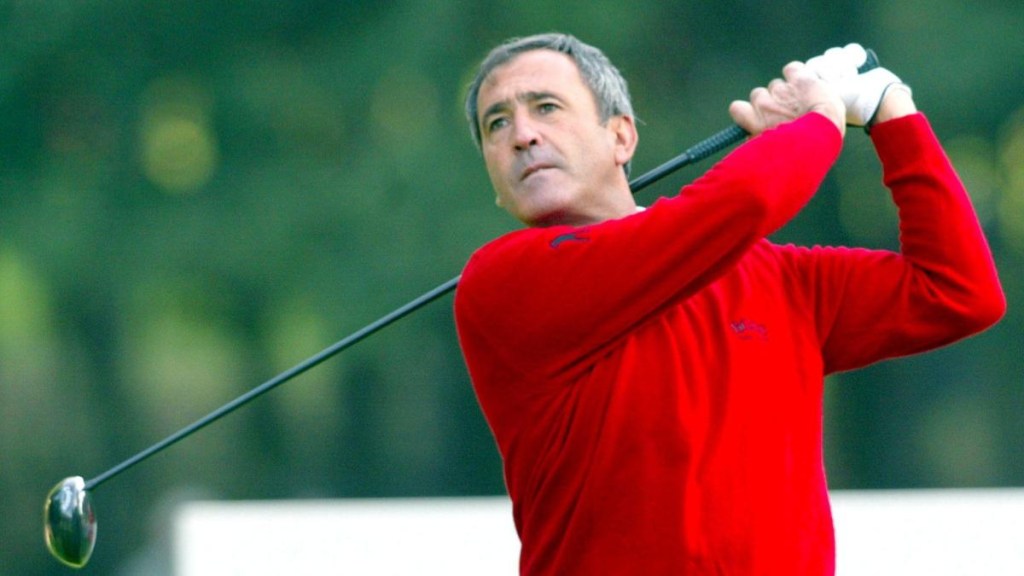Legacy is a tricky thing in golf. Exceptional golf swings live forever on YouTube. Ball-striking greats are remembered more by people who’ve actually seen them hit a golf ball: a video can’t really convey the quality and sound of an exceptional ball strike. Major champions, especially one-time winners, are immortalised on the trophies but eventually become names etched on silverware.
But there’s a handful of players who transcend the wash of the years and short public memory. Besides superlative golfing abilities, what really differentiates this lot is that they are, without exception, characters: not ball-hitting machines but individuals with strong, sometimes even eccentric personalities. And within this rarefied group, Seve Ballesteros — the Spaniard who passed away in May 2011 — has no peers. Like clockwork, Seve’s spectral figure comes back every May; the golf media is awash with stories and anecdotes; players young and old share their favourite memories, and there’s a glut of online pundits discussing Seve’s shotmaking and technique.
We use the words ‘legend,’ and ‘genius,’ somewhat loosely these days. But no one would argue that Seve — a man who once said, “My hands are my computer,” after scoffing at a swing monitor, or spun a greenside bunker shot into the hole with a three-iron (after betting that he could) — is the very definition of golfing genius. What often gets lost in the dazzle of Seve’s brilliance is his exceptional record through the years: 90 wins that included eight Ryder Cups, three Opens, and two Masters. He was much more than a genius: Seve changed the very image of European golf.
Perhaps the reason that Seve’s imaginative shotmaking is remembered with so much fondness is its increasing rarity in the modern game. Power is great, but flair and creativity are so much more attractive to watch. Don’t get me wrong: I love watching Bryson DeChambeau launching a ball into orbit. DeChambeau’s analytical approach, turning golf into a physics equation, is fascinating in its own right. But after a while of watching young players playing long drives, it’s hard not to feel a pang of nostalgia for the days when the short game was king. The days when a player’s imagination, not just their TrackMan data, could save a round.
Take the 1993 European Masters Open Championship at Crans Montana. Seve famously won there after hitting a miracle shot on the 72nd hole. Sitting on his knees on the pine straw, with half a backswing, Seve hit it above an eight-foot wall that the ball was lying seven feet from, over tall pine trees, and next to the green. He then proceeded to chip it in for birdie to win the tournament. It was a shot of pure Seve — audacious, instinctive, the kind that made you leap out of your seat.
Fast forward to the 2023 European Masters, and most players in the field were hitting it well over 300 yards off the tee, which meant very different lines tee to green. And when they did land in trouble, without exception, most played the percentages — smart strategy no doubt, but a far cry from the swashbuckling spirit Seve embodied. The equipment, of course, is partly to blame. Drivers are now engineered to minimise spin and maximise distance, even on mishits. Wedges are so versatile that even the deepest rough seems manageable. And while these advancements have made the game more enjoyable for us hapless amateurs, they’ve also homogenised the professional game, turning it into a long-drive contest with a wedge-off for dessert. But let’s not lay all the blame on technology. Coaching has also played a role. Young players are groomed from an early age to swing for the fences to prioritise distance over touch.
The result is a generation of players who are incredibly skilled but perhaps a little less…shall we say, enchanting. We’ve traded the improvisational jazz of Seve for the meticulously orchestrated symphony of modern golf. It’s impressive, but is it as much fun to watch? I’m not suggesting we turn back the clock. The athleticism and power of today’s players are undeniable. But I do believe we can find a balance. We can celebrate the bombers while also nurturing the scramblers and the artists.
A welcome change, however, is the emergence of young players like Ludvig Aberg, who won the 2023 European Masters. Aberg can bomb it with the best of them, but it’s his touch around the greens, his willingness to play shots that most wouldn’t dare, that hints at a return to a more imaginative style. His performance at Crans Montana, navigating the tricky greens of Crans-sur-Sierre with the deftness of a veteran, was a glimpse of what’s possible when talent meets creativity.
Go watch the highlights of the 1979 Ryder Cup at The Greenbrier. Seve, paired with Antonio Garrido, faced down Jack Nicklaus and Tom Watson on the 18th green. With the match on the line, Seve holed a 20-footer for birdie, while Nicklaus, the Golden Bear himself, missed his from half the distance. That putt wasn’t just about skill; it was about chutzpah, the kind of unflappable confidence that Seve exuded. I can’t really imagine any of the current crop of players, not even the supremely talented Jon Rahm pulling off that kind of theatrics.
The secret to Seve’s legacy is relatability. It lives on in every golfer who dares to chip from the trees, who attempts the impossible flop shot, who embraces the chaos and uncertainty of the short game. It is in those moments of audacious creativity that golf truly comes alive.

